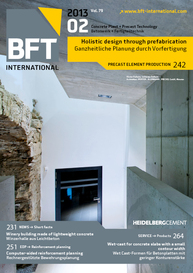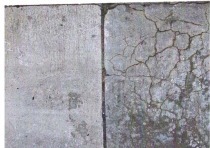Practice-driven requirements
The further development of construction material, taking into account environmental policy and economic conditions, has now turned concretes into complex five-component systems of different concrete constituents that have to stand the test of varying ambient conditions. With respect to this trend, rules and regulations are required that, on the one hand, formulate flexible boundary conditions for building material manufacturers and contractors and on the other hand, ensure durable constructions.
The durability of constructions made of concrete is usually ensured by descriptive rules for the...

![→ 1 Strains of core halves (mean values from two core halves) extracted from road pavements with varying degrees of damage determined in the 60 °C concrete test with external alkali supply by exposure to a 3% NaCl solution [2], part of the data taken from [1]](https://www.bft-international.com/imgs/tok_4bbd325637108bc311365e8132637ccf/w300_h200_x297_y421_103955978_08f8c4b50b.jpg)
![→ 2 Freeze/thaw resistance of concrete: influence of the particle size distribution of cements containing about 30 m.-% of limestone on surface scaling determined in the cube test [3]](https://www.bft-international.com/imgs/tok_f33fc028f238841bd3ff4dd7b155f00f/w300_h200_x297_y421_103955976_eb81bb04bd.jpg)





